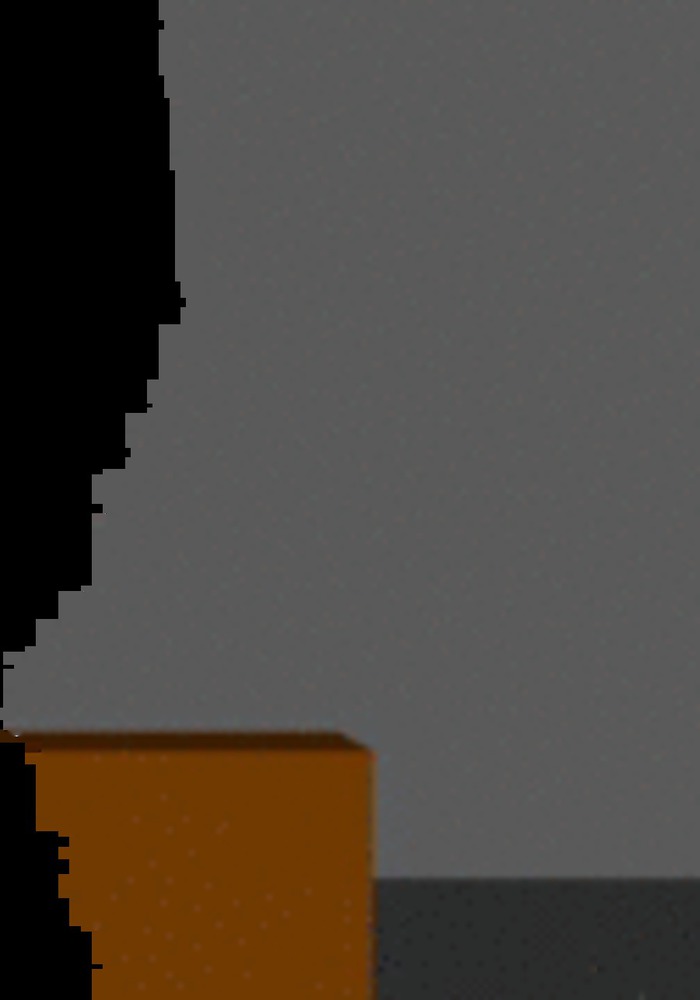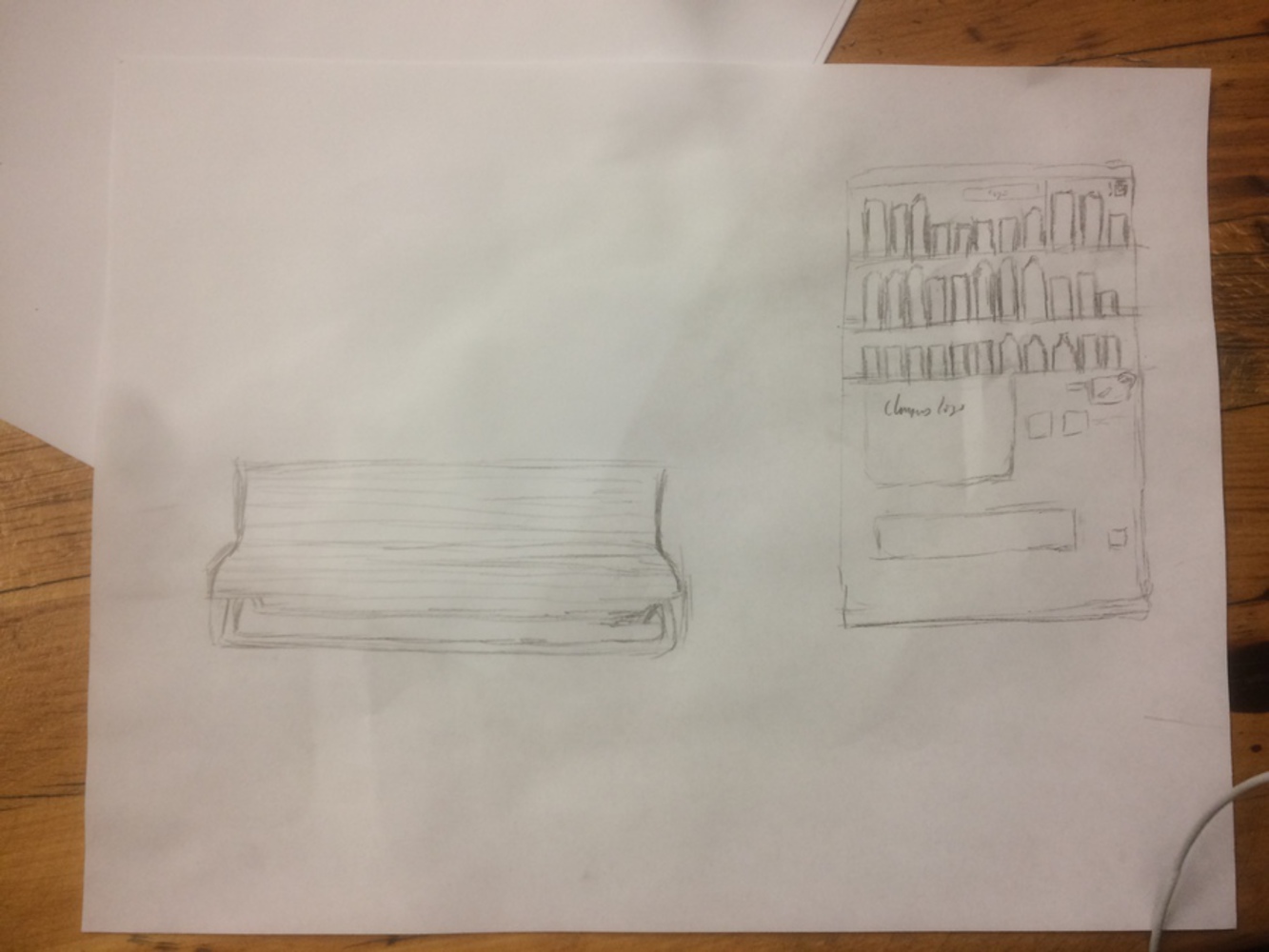Original Proposal:
Create a short animated piece (in Maya) based off of the interactions between two characters as they age through time. Cuts will be styled similar to scifi/Satoshi Kon, with people walking in front of the camera creating the cut. No explicit dialogue will happen in the short film as well.
The two will start as a pair of young kids, a boy and a girl, the girl being more energetic, the boy more withdrawn. They discover the bench and the vending machine, and for fun the girl convinces the guy to let her climb his shoulders to reach the machine (after both check their pockets for money). They sit down, start drinking in character, and then first cut.
Next cut is them around middle school age. Both are still friends, similar character still. Girl pulls out her phone, asks guy for contact (he acts slightly shy), and he puts down his drink and gives it to her. She laughs about him, and he acts embarrassed again, picking up his bag and walking off screen, the girl reaching out after him. Cut 2.
This time both are high school age, and she is at the machine, back facing camera. Guy walks to the bench and stops, looking at what she is doing, when she turns back around with a large stack of cans in her hand. She throws one at the guy and sets the pile down onto the middle of the bench, and the two work to finish off the sodas. Cut 3.
Suddenly they are both working age (late 20, early 30), and he is bent down, sobbing into a can of alcohol, a stack of cans near his feet. The woman is looking at him, a can in her hand as well, a slightly smaller stack too. She tries to console him, but he just looks sadder. Suddenly, he tries to propose to her, but she responds by showing him her ring finger (suggesting a ring). He settles back down, in sudden realization, and stares sullenly at the ground. Finally, he gets up, grabs his briefcase and walks off, as the woman half stands, reaching out similar to cut 2, but instead of dwelling on it, she sits back down, finishes the rest of the beer, picks up her own suitcase and walks offstage opposite to the guy. Cut 4.
Now a series of rapid direct cuts (no people transitions), of the two. Includes cuts of the woman with a man (presumed new husband), the man with a woman (presumed found someone and has wife), man with a child, woman with a child etc. This scene is a bit freeform.
Final cut, an old man (the man MC from before), walks slowly over to the vending machine with a cane, buys a small drink and sits down. He drinks from the bottle, pauses and sighs. He pulls out a photo and touches it (viewer is supposed to infer that it is his now deceased wife). He sighs again and takes another sip while the woman, also old, walks in from the other side, buys a drink, and also sits down. Both just sit, look around and drink until they see each other. They reconnect, she shows him that her husband has also died, and the two share a moment of solemn silence, with him patting her back as she lost her husband more recently. Finally, the two finish their drinks, he grabs her can and tosses it out with his, and offers her his hand to take them both offscreen. Before they go, the old woman leaves some change on the bench, and the two leave. For a moment it just holds the still scene with the camera slightly creeping closer, and finally, two children, again female and male, run over to the bench, see the change, grab it, and end scene.
The entire scene will be taken from a camera angle which matches the image below, with the cuts only being people wiping the screen, except for the freeform area. There will be temp models for everything static, specifically the scene, the vending machine, the bench, a recycling bin, and cans. The character models will be just variants of the Morpheus model and rig, and there will be no sound.
I unfortunately do not plan on adding full textures and completely unique characters due to the amount of time given, yet hopefully it would make for good material as a reel and as an application of the principles of animation.
This is a bit taking liberties on the second module, electronic media. But instead of taking the direct remix or mashup path to creating something, instead I plan on doing the opposite, create something new, although the use of music may tie back into the concept of spreadability. The main focus of spreadability is to create a piece that is unique enough not to challenge YouTube takedowns (which I experienced with the module) to provide for an avenue for spreading, and to create something wholly unique yet only able to live on the internet, something explored in videos such as "Don't Hug Me I'm Scared", or "TIE Fighter". The latter does reappropriate the world of Star Wars into a piece, but ignoring the background of the piece it can be considered to be unique animation.
My end goal with the piece is to achieve a sense of the circular and fleeting sense of time, how time for individuals can sometimes feel fast, yet on a grander scale it can revolve back. The camera angle is on purpose to save on camera animation, to utilize the unique cutting, and to make me animate stronger in order to show character intent without explicit dialogue.
This piece will take a lot of time for me to finish, and I do not expect to be able to use completely unique models for the character animation, as well as having complete textures for the static models done. As such, there is plenty of room to cut down on the work if needed. I have done character animation in Maya before, and I have done a 20 second animation (which should have been lengthened to about 40 seconds due to too little frames between poses) within the timespan of 8-10 hours over two days. However, I do believe that such a short film would be doable within the three weeks of the module.
For example work:
Themes: "5 Centimeters Per Second" Makoto Shinkai
-How relationships can distance with time and space.
Editing style: Using objects to wipe the frame (Satoshi Kon)
Example outlined in video below from Tony Zhou at 2:12
Edgar Wright also uses a similar style in his film work.
Camera: For a feeling similar to a lateral tracking shot, with a level of distance given to the viewer, while trying to add a level of intimacy seen in Wolf Children


